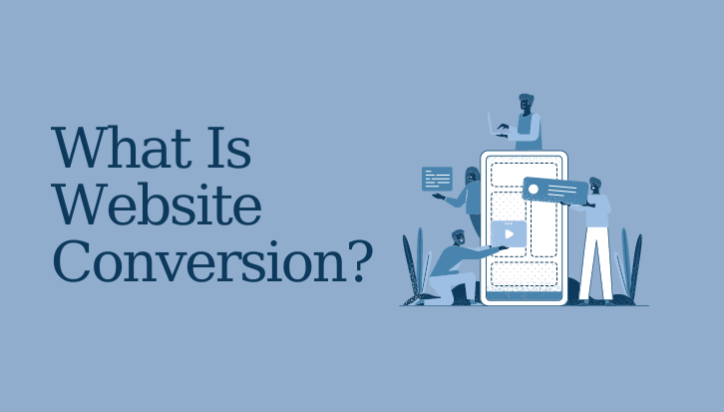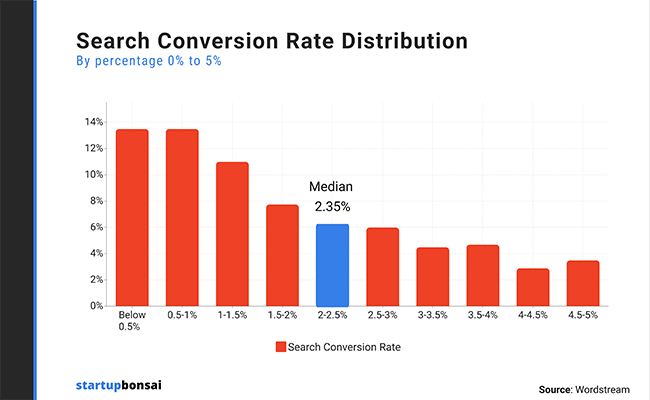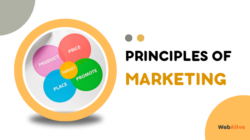
What Is Website Conversion? And Ways to Improve It
Did you ever come across a website that fell short of your expectations? Maybe the visual design seems off, making it more difficult to find what you are looking for or perhaps the content is not engaging enough to capture your interest. As it turns out, all these factors can have a crucial impact on a website’s conversion rate.
From investors to marketers to product managers to founders, everyone who runs a business website shares a common desire. And that is conversions, that too based on their respective objectives.
But what exactly is website conversion?
What is website conversion?
Basically, a website conversion occurs when a visitor arrives on your website and completes a desired action or goal. The goals may vary depending on the aims and type of your website and business. Suppose you sell products online, and product sales might be your conversion goal, while for others, it might be the number of email newsletter sign-ups.
Here are some website actions that you can count as conversions:
- Purchasing a product
- Signing up for a service
- Subscribing for newsletters
- Sharing content on social media
- Clicking a specific CTA button
- Completing a form
- Adopting a new feature
- Downloading any app
And the percentage of people that complete your pre-determined action is what we know as the conversion rate. Suppose 100 people visit your website and two people make a purchase; then 2% will be your conversion rate.
What is a good conversion rate?
Conversion rate is considered an important metric for a website’s popularity that ensure your business is growing. What you consider a good or bad conversion rate doesn’t apply to all business industries. There is no such magic number as it depends on numerous factors like your industry, sales cycle, your services or products, costs or more. However, the most common conversion rate usually ranges from 2 to 5 per cent.
An analysis of the massive amount of data on landing pages and conversion rates shows that the average website conversion rate is around 2.35%, while the top ones might be converting at 5.31% or more. Yet the figure might vary dramatically from industry to industry.

The importance of website optimisation in driving conversions
Website optimisation is a set of actions that works on improving a website’s performance across several areas, from web traffic to conversion rates to usability. With all the ways you can optimise your website, the benefits you reap are also many.
When you optimise your website content’s quality, it makes it easier for people to find your content organically. And with increased traffic also comes increased chances of potential leads converting into customers.
Going into website optimisation helps you to achieve an exceptional website experience. Page load speed is the primary step toward optimising your website. Short load time is vital to keep potential customers on your website. You need to ensure your page load time is as efficient as possible.
When optimising a website, you evaluate your speed and performance, and the test will point you to the indicators that might be showing your webpage. Then, when you have the direction, you compress the sizes of bulky media files and other elements to speed up the page load time. Website optimisation also ensures a lightweight, responsive and mobile-first design for a website.
After all, not just your desktop website; you need to optimise your mobile website at the earliest too to maximise your conversion rate. You can easily detect any bugs, errors or broken links and fix them. In addition, you can make sure your website and content are optimised for search engines as well.
How does website performance affect conversion rate?
A website that lacks user-friendly navigation and has a design that is off, loads lately, appears untrustworthy and fails to demonstrate its value to visitors will inevitably lead them to click away, regardless of their initial intentions to make a purchase or proceed to checkout.
No doubt, website performance has a measurable effect on conversion rates. Let’s take a closer look at some factors of a website that affect conversion rate.
Website speed
Website speed refers to how fast a browser is able to fully load a functional web page. The faster a webpage loads, the higher it raises the chances of a user performing the targeted actions on the webpage. Nearly 70% of customers admit that page speed does impact their willingness to buy something from any online retailer.
According to a notable finding, pages that took 2.4 seconds to load experienced a promising conversion rate of 1.9%.
When the loaded time is extended to 3.3 seconds, the conversion rate had a slight decline to 1.5%.
Furthermore, at 4.2 seconds, the conversion rate was less than 1%.
And when pages took 5.7 seconds or more to load, it resulted in a conversion rate of 0.6%.
So, here we can see improving page load time by one second can make a huge difference. The seemingly small increases in conversions eventually have a major impact on the amount of revenue a site generates.
Website design
Website design is another important factor that impacts a website’s conversion rate. A poorly designed website can easily break a user’s experience alongside their likelihood of converting. For example, websites with cluttered layouts, confusing navigation, and overly embellished and unstructured web pages can easily minimise the chances of a visitor taking the desired actions, having a negative effect on conversion rates. Inconvenient forms, fonts, colours or general aesthetics can cause serious damage as well.
Website content
The content on a website also plays a major role in driving conversions. When a clear, concise and compelling copy can lead visitors towards taking the desired action, a vague and confusing copy can quickly turn visitors away. Also, if your website copy doesn’t effectively communicate the value of your brand and its offerings, it will negatively influence the decision of your visitors to convert.
For example, when you want your visitors to complete certain actions, you need to tell them to do so. But lack of action-oriented language in the call-to-actions throughout the web pages will lead to a lower conversion rate.
Mobile responsiveness
Today, it comes with no secret that mobile searches outnumber those that take place on desktop devices. Browsers using mobile, tablet, or desktop expect an optimal viewing experience on the website they visit. But then your site is not mobile-friendly, which makes navigation more challenging. And this may result in a high bounce rate, which will become a major impediment to securing conversions.
Wrapping up
All these show the necessity of website optimisation in determining the success of a website in terms of conversion rate. After all, the content, design and speed of a website are what determine the probability of a visitor converting, as each of these factors exerts a profound influence on the conversion rate.
Overall, from SEO to website performance to mobile optimisation to website accessibility, there are many areas of your website that you can optimise to drive more conversions. And the benefits are not just even limited to increasing conversion rates.
You read a lot. We like that
Want to take your online business to the next level? Get the tips and insights that matter.

